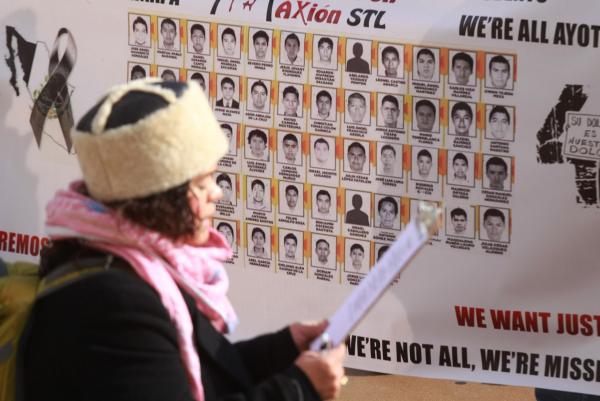
MEXICO CITY, April 24 (UPI) — International investigators concluded that federal and state Mexican police had a role in the disappearance of 43 college students in September 2014.
In a scathing 608-page report, a five-member panel appointed by the Inter-American Commission on Human Rights concluded the disappearances and presumed killings of the students appeared to be a coordinated effort involving different security forces.
The investigators also said the Mexican government constantly put up “obstructions” and widespread use of torture in criminal investigations sabotaged their probe. But the report didn’t claim federal police and soldiers were directly involved in the mass disappearance, but noted they were present at different locations that night.
The yearlong independent investigation failed to determine what happened to the young men.
“We don’t know the final destiny of the students,” said Claudia Paz y Paz, a former Guatemalan attorney general and a member of the independent investigative team.
The Mexican government this month declined to extend the contract of the investigative team, which works for CIDH, the human-rights branch of the Organization of American States. The investigators’ contract ends April 30.
The five experts said there is no evidence to support the government’s belief that the students were killed and their bodies burned at a garbage dump. The students were stopped by municipal police in Iguala, a city in the southern state of Guerrero that is known for opium poppy and heroin production. According to the government, police turned the men over to the Guerreros Unidos drug gang that burned their bodies.
Mexican government officials didn’t comment on the report. In a statement Friday, a Mexican government official said Mexico has shown “at all times collaboration and disposition to work” with the investigators, “giving its full support to uncover the truth of these tragic events.”
The youths, most of them sons of poor peasants, attended a teachers college in the town of Ayotzinapa known for its political radicalism and ties to tiny, mostly dormant guerrilla groups. The night of the disappearances, the students had gone to Iguala and hijacked buses to a protest in Mexico City.
The panel said Mexican authorities showed “little interest” in moving forward with new areas of the investigation. It noted that 17 of the approximately 110 suspects showed signs of beatings.





